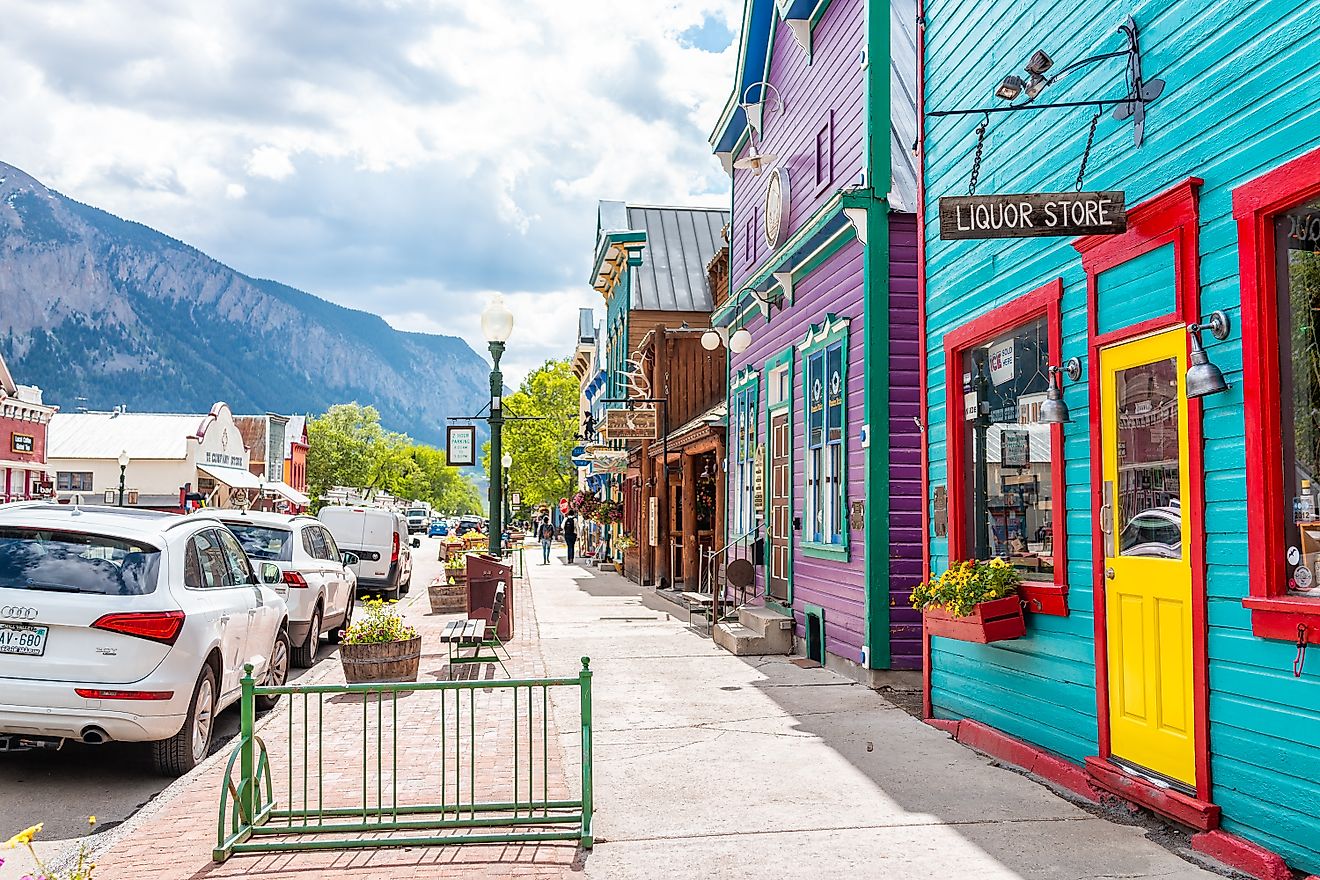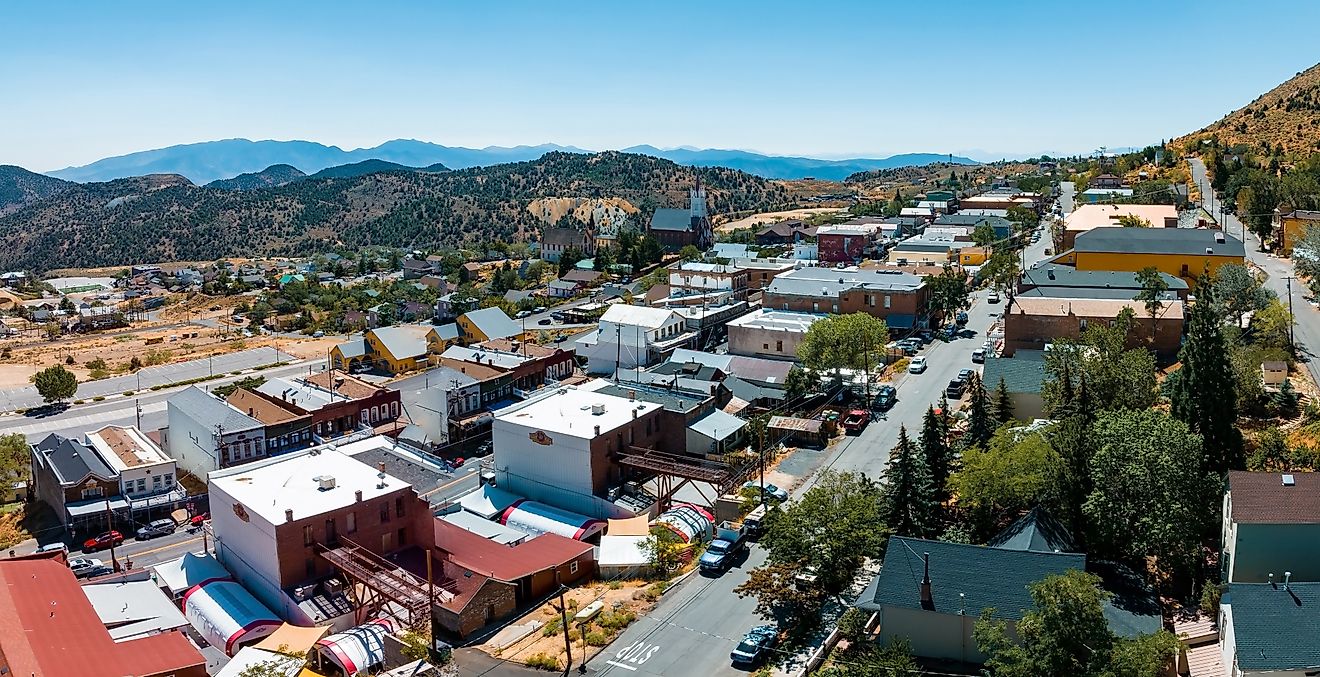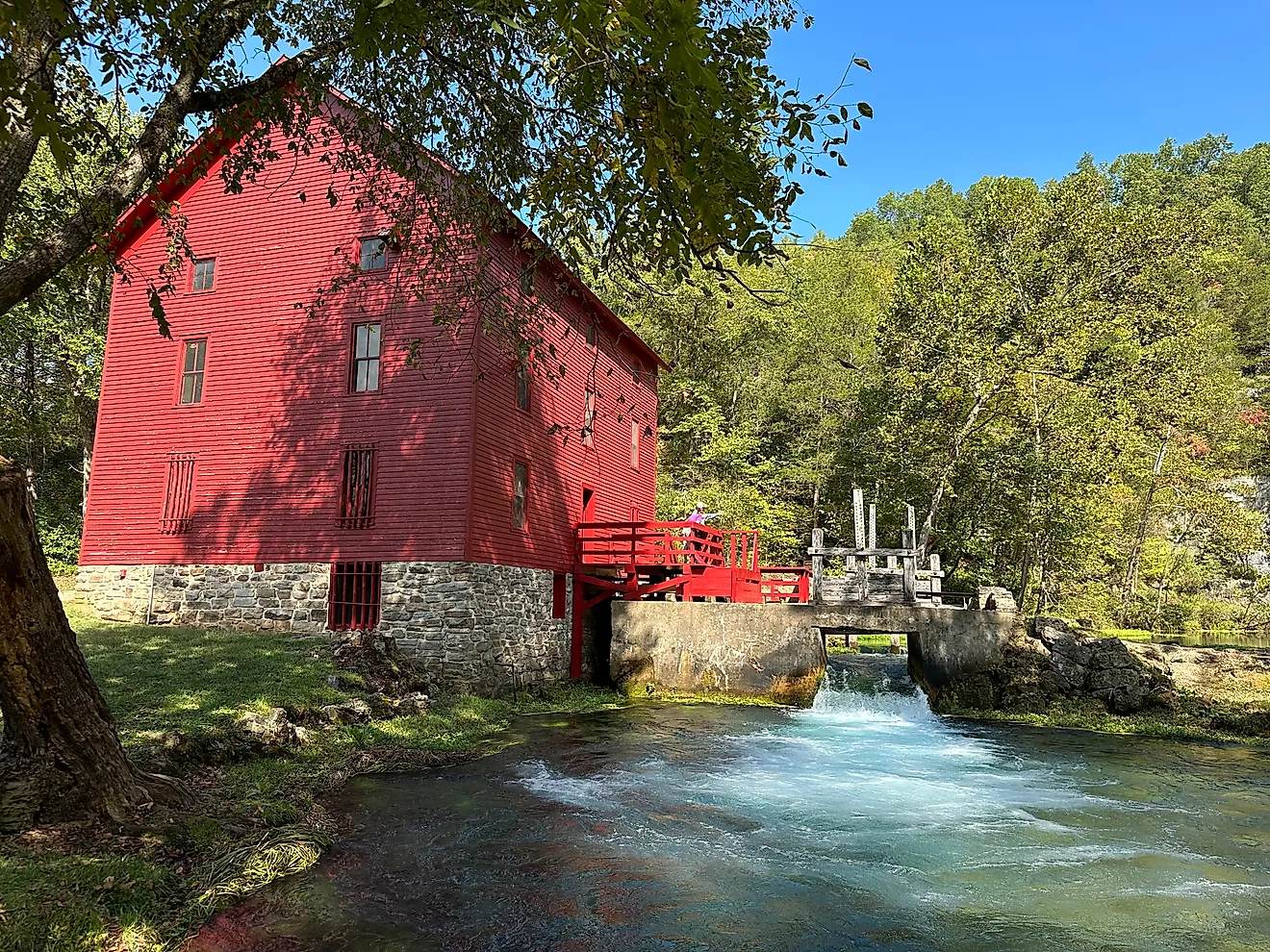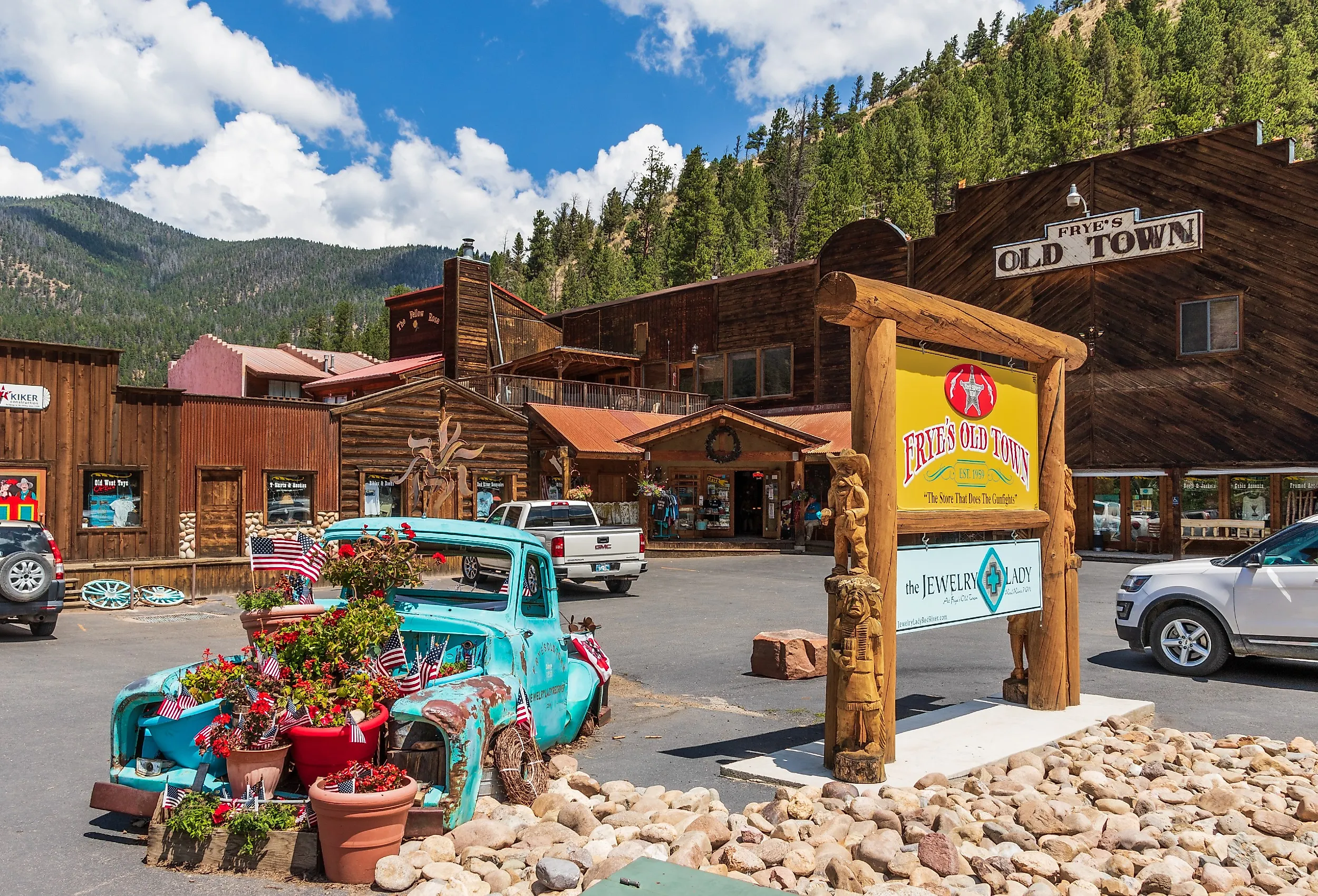
8 of the Most Charming Small Towns to Visit in New Mexico
New Mexico, often referred to as the "Land of Enchantment," blends Native American, Hispanic, and Anglo traditions, evident in its art, architecture, and local customs. The state's landscape is equally varied, encompassing high deserts, wooded mountain ranges, and vast plains. New Mexico's capital, Santa Fe, is the oldest state capital in the United States, founded in 1610, and is known for its Pueblo-style architecture and vibrant arts scene. Albuquerque, the largest city, hosts the International Balloon Fiesta, the world's largest hot-air balloon festival.
Beyond its cities, New Mexico is also home to charming small towns that give a more intimate look at the state's rich history and cultural heritage. These eight should be at the top of your bucket list.
Taos
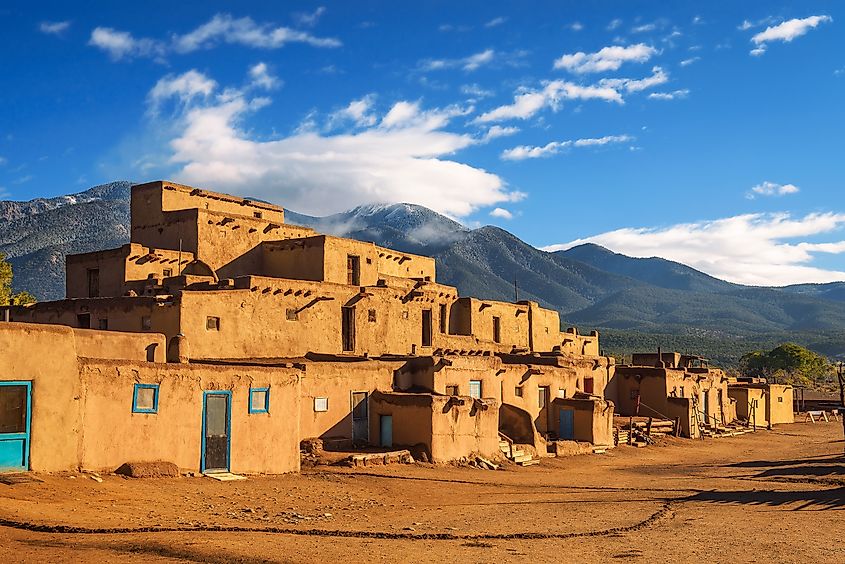
Taos, New Mexico, is located in the high desert at the base of the Sangre de Cristo Mountains. The town has long been a crossroads of the Native American, Hispanic, and Anglo cultures and is perhaps best known for its historic adobe architecture. Taos has been a magnet for artists and writers since the early 20th century, drawn by its dramatic landscapes and light. Towering mountains provide a backdrop for the town.
Taos Pueblo is a must-see, showcasing the living history and culture of the Native American community that has inhabited the area for thousands of years. The adobe structures and community traditions are a lifelong way of life maintained through generations. Another notable site is the Rio Grande Gorge Bridge, one of the tallest bridges in the United States. It crosses the deep canyon carved by the Rio Grande and offers stunning views of the gorge. Also, visiting Earthship Biotecture provides an eye-opening experience to sustainable living. This community of off-grid homes, built from natural and recycled materials, features innovative designs that reduce ecological impact and are suited to the harsh desert environment.
Cimarron
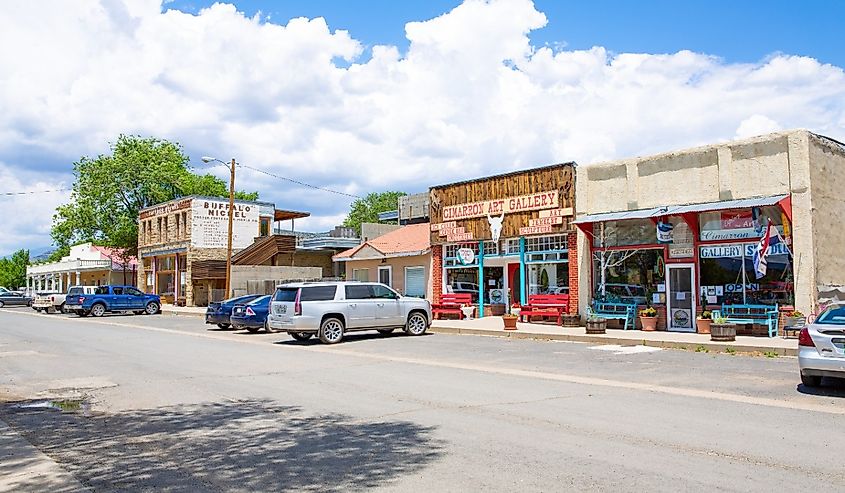
Cimarron is located in the northeastern part of New Mexico, and its name comes from the Spanish word for "wild" or "untamed." The town was once a frontier of conflict and trade, visited by notable figures like Kit Carson and the infamous outlaw, "Black Jack" Ketchum. The surrounding area includes rolling prairies broken by volcanic rocks and the Sangre de Cristo Mountains to the west.
Cimarron Canyon State Park has dramatic rocky cliffs and river scenery ideal for fishing, hiking, and camping. The park's ecosystems and accessible trails allow visitors to closely experience New Mexico wilderness. The Palisades Sill, located within the state park, is an impressive geological feature composed of vertical columns of cooled volcanic ash, ideal for photography and nature walks. Additionally, the historic Chase Ranch is home to well-preserved 19th-century ranch buildings and is still operational. This ranch offers educational tours that highlight traditional ranching practices.
Jemez Springs
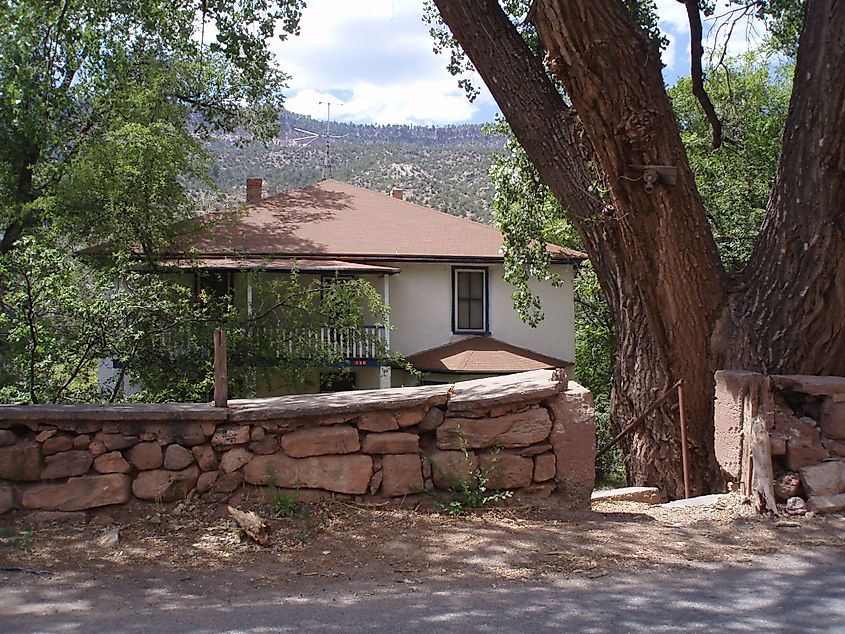
Jemez Springs, New Mexico, is a village in the Jemez Mountains. Known for its natural hot springs, Jemez Springs is located in the Jemez National Recreation Area, rich in geological features including vast caldera and rugged basalt cliffs. Historically, the area has been the homeland of the Jemez Pueblo people, who have resided there for centuries.
The Jemez Historic Site features the ruins of the 17th-century San José de los Jemez church and several ancient pueblo dwellings. This site offers an important perspective on Spanish colonial history and the ancient traditions of the Native American people of the region. The Valles Caldera National Preserve is another point of interest. It was formed by volcanic activity that visitors can explore through hiking, fishing, and wildlife viewing in one of the largest calderas in the United States. Additionally, Spence Hot Springs provides a relaxing and scenic experience, where visitors can soak in natural thermal pools surrounded by the Jemez Mountains.
Ruidoso
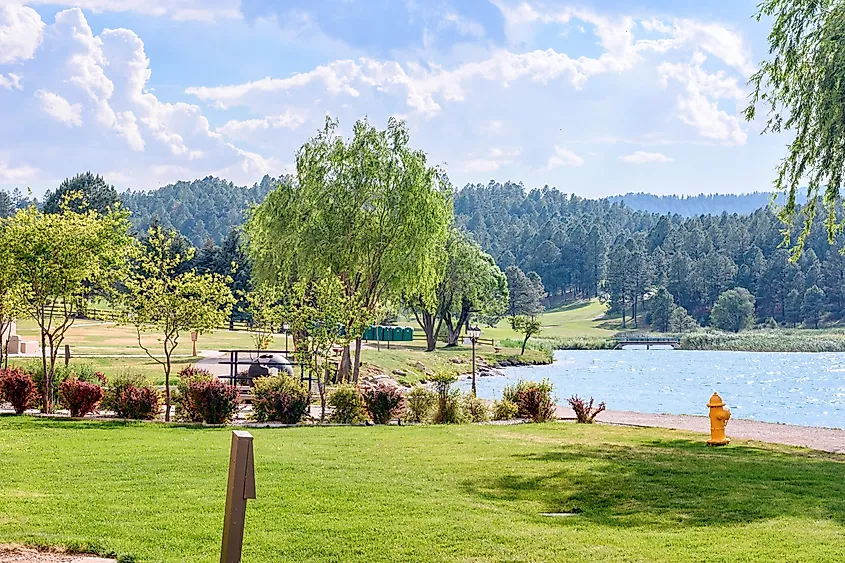
Ruidoso is a mountain resort town in the Sierra Blanca range. This charming village, sitting at an elevation of approximately 6,900 feet, has a cool, mild climate and abundant pine forests. Historically, Ruidoso began as a small logging town. The area's history is also marked by its proximity to the Lincoln County War sites, which were central to the conflict involving figures like Billy the Kid.
Lincoln National Forest surrounds Ruidoso and offers excellent opportunities for hiking, camping, and horseback riding, with trails and scenic views suitable for all skill levels. Fort Stanton-Snowy River Cave National Conservation Area is another popular attraction, known for being one of the longest cave systems in New Mexico. Visitors can join guided tours of the caves to explore its natural underground formations. Grindstone Lake provides a more relaxed setting for fishing, hiking, and picnicking, with additional options for boating and water sports during the summer months. The lake area also features a trail system for mountain biking and hiking.
Chimayó
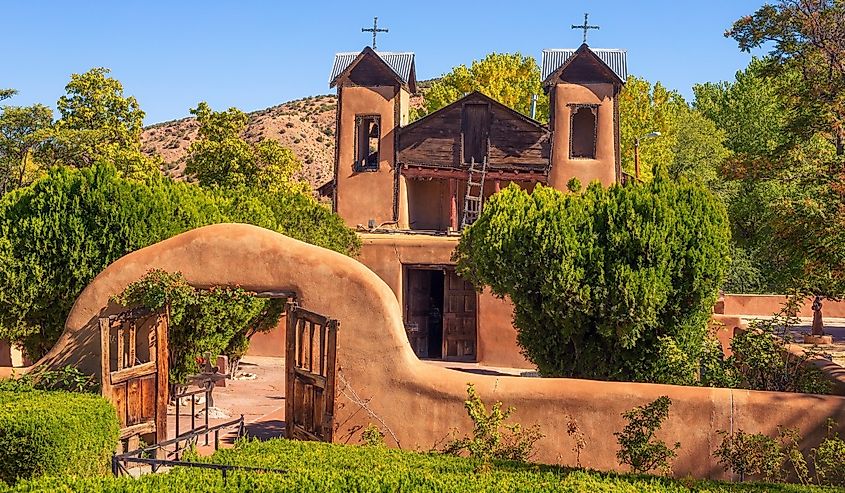
Chimayó, New Mexico, is a small, culturally vibrant village nestled in the foothills of the Sangre de Cristo Mountains in the north-central part of the state. This area is known for its Native American history and the impact of Spanish colonial settlers who arrived in the late 1600s. Chimayó is especially famous for its religious traditions, which are deeply connected to the local Catholic community, making it a popular pilgrimage site.
El Santuario de Chimayó, one of the most revered holy sites in the United States, attracts thousands of pilgrims annually, especially during Holy Week. This historic church is famed for its healing dirt and religious folk art. Ortega’s Weaving Shop is another must-visit location, where visitors can observe traditional Spanish weaving techniques and purchase handwoven textiles that reflect the rich weaving heritage of Chimayó. Finally, Rancho de Chimayó serves traditional New Mexican cuisine in a century-old adobe home. This restaurant lets visitors witness the traditional lifestyle and hospitality integral to Chimayó's charm.
Madrid
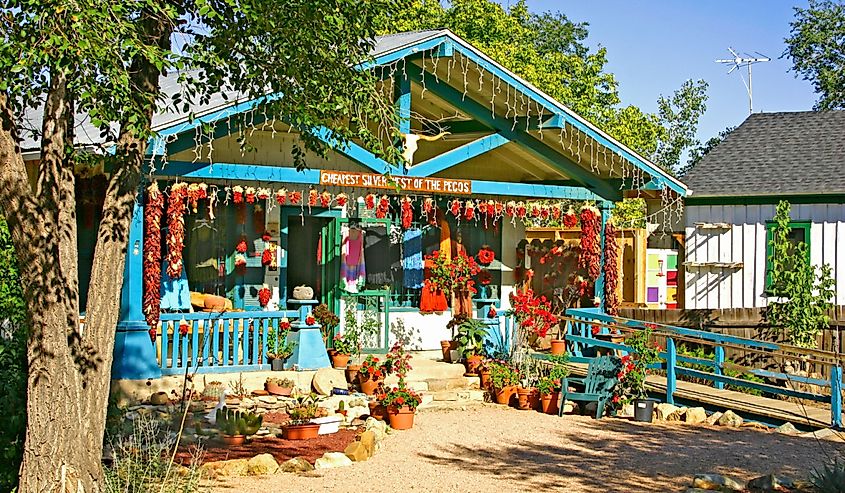
Madrid is in the Ortiz Mountains along the scenic Turquoise Trail. The town flourished due to the demand for coal. Madrid's coal mines were among the most productive in the state until the decline of coal use in the mid-20th century, which led to the town's temporary abandonment. In the 1970s, Madrid was revitalized by artists and entrepreneurs who transformed the abandoned homes and shops into galleries, boutiques, and cafes.
The Mine Shaft Tavern offers a rustic, historic atmosphere and serves as a community gathering spot where visitors can enjoy live music, local food, and a selection of drinks. The Old Coal Town Museum further delves into Madrid's mining history with artifacts, photos, and stories from its coal mining days. Additionally, the Madrid Christmas Parade is a yearly event that showcases the town's quirky and artistic character. This festive occasion features colorful floats, performances, and holiday spirit.
Mesilla

Mesilla, New Mexico, is a town in the southern part of the state, near Las Cruces and just a short distance from the Rio Grande. Founded in the mid-19th century, Mesilla was significant in the area's transition from Mexican to US governance following the Gadsden Purchase in 1854. The town's plaza and surrounding buildings are examples of traditional Spanish colonial architecture. Mesilla has been a crossroads of cultures for centuries.
Mesilla Valley Bosque State Park offers trails for walking and bird watching along the Rio Grande. As a relatively new addition to New Mexico's state park system, the park focuses on preserving and restoring the Rio Grande floodplain. The Basilica of San Albino, one of the oldest missions in the area, proudly stands on historic Mesilla Plaza and educates visitors about the region's religious history. For entertainment, the Fountain Theatre, operated by the Mesilla Valley Film Society, is the oldest movie theater in New Mexico and screens both independent and foreign films.
Red River

Red River is a mountain town nestled among the high peaks of the southern Sangre de Cristo Mountain range in the Rockies. Founded in the late 1800s as a mining camp, the town was initially a hub for gold, silver, and copper miners. As the mining industry declined in the early 1900s, Red River shifted into a resort destination, taking advantage of its alpine surroundings, with abundant forests and pristine streams.
The Enchanted Forest Cross Country Ski Area offers extensive trails for cross-country skiing and snowshoeing during winter, set amidst snow-covered hills and forests. It is a great spot for both families and individuals. The Goose Lake Trail is a popular hiking destination known for its challenging yet rewarding hike leading to Goose Lake. This trail is perfect for those wanting to explore the more remote parts of the surrounding mountains. For the more adventurous, the Wheeler Peak Wilderness Area provides an opportunity to explore New Mexico’s highest peaks, with hiking trails leading to lookouts over the surrounding valleys and rugged terrain.
New Mexico's charming small towns serve as windows into the state's diverse culture and natural beauty. From the historical richness and artistic spirit of Taos to the peaceful charm of Jemez Springs with its soothing hot springs and Native history, these towns exemplify the unique character of the "Land of Enchantment." Ruidoso and Chimayó further highlight the state's appeal, offering a mix of recreational activities and spiritual heritage that attract visitors all year round. Each of these towns adds to the rich mosaic of experiences that New Mexico provides, making them must-visit destinations for anyone eager to explore beyond the more popular urban areas.


